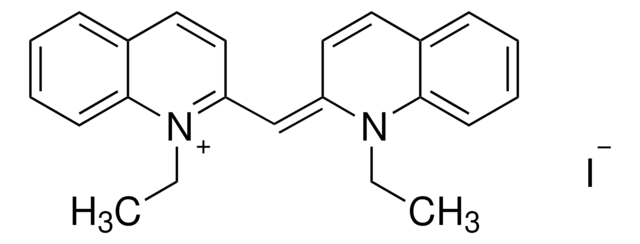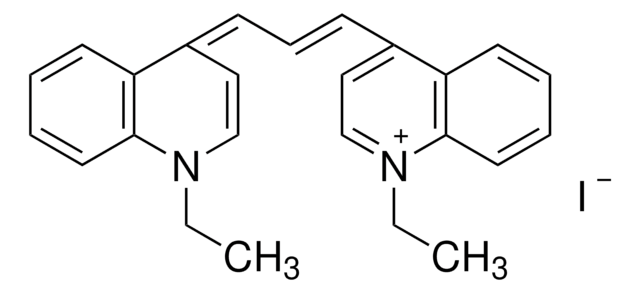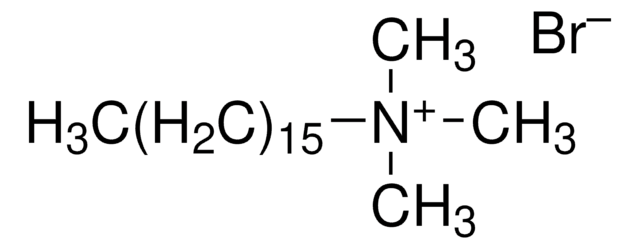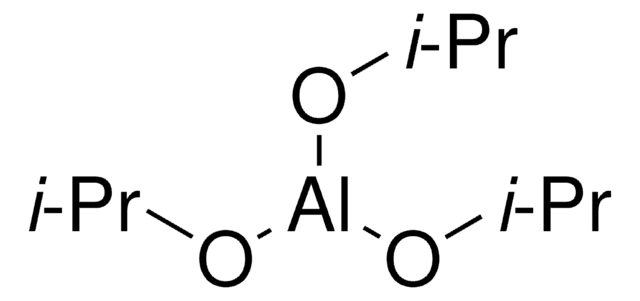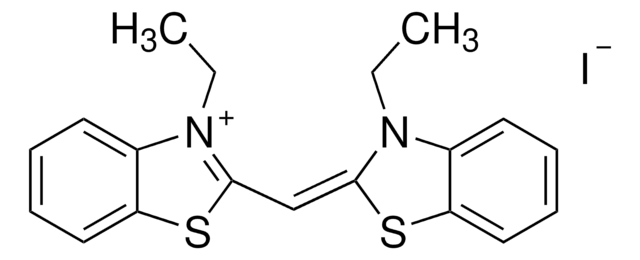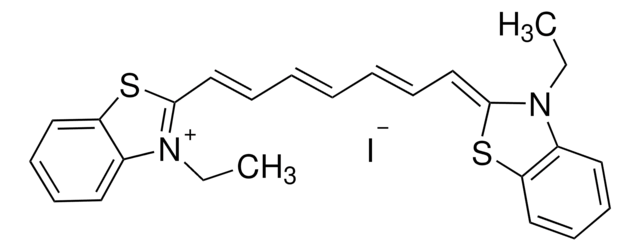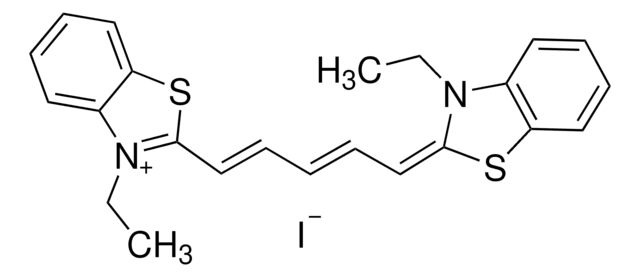201715
Pinacyanol chloride
Synonym(s):
1,1′-Diethyl-2,2′-carbocyanine chloride, 2,2′-Trimethinequinocyanine chloride, Quinaldine blue
About This Item
Recommended Products
form
powder
mp
270 °C (dec.) (lit.)
λmax
560 nm (2nd)
604 nm
ε (extinction coefficient)
≥150000 at 603-609 nm in ethanol at 0.001 g/L
≥65000 at 559-565 nm in ethanol at 0.001 g/L
application(s)
diagnostic assay manufacturing
hematology
histology
storage temp.
room temp
SMILES string
[Cl-].CCN1C(=C\C=C\c2ccc3ccccc3[n+]2CC)\C=Cc4ccccc14
InChI
1S/C25H25N2.ClH/c1-3-26-22(18-16-20-10-5-7-14-24(20)26)12-9-13-23-19-17-21-11-6-8-15-25(21)27(23)4-2;/h5-19H,3-4H2,1-2H3;1H/q+1;/p-1
InChI key
FVMNARAKYNRZID-UHFFFAOYSA-M
Looking for similar products? Visit Product Comparison Guide
Related Categories
Biochem/physiol Actions
signalword
Warning
hcodes
Hazard Classifications
Eye Irrit. 2 - Skin Irrit. 2 - STOT SE 3
target_organs
Respiratory system
Storage Class
11 - Combustible Solids
wgk_germany
WGK 3
flash_point_f
Not applicable
flash_point_c
Not applicable
ppe
dust mask type N95 (US), Eyeshields, Gloves
Certificates of Analysis (COA)
Search for Certificates of Analysis (COA) by entering the products Lot/Batch Number. Lot and Batch Numbers can be found on a product’s label following the words ‘Lot’ or ‘Batch’.
Already Own This Product?
Find documentation for the products that you have recently purchased in the Document Library.
Customers Also Viewed
surfactants in aqueous medium
Our team of scientists has experience in all areas of research including Life Science, Material Science, Chemical Synthesis, Chromatography, Analytical and many others.
Contact Technical Service
